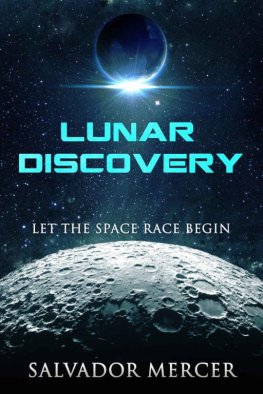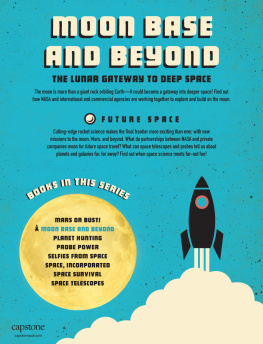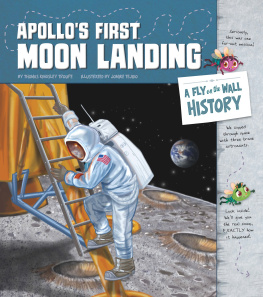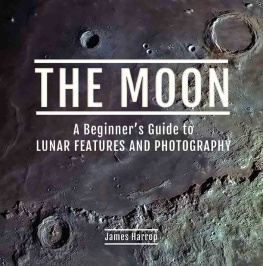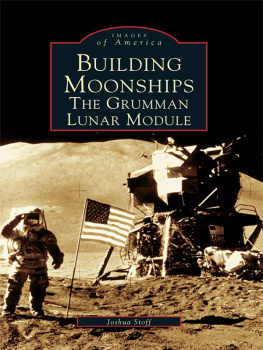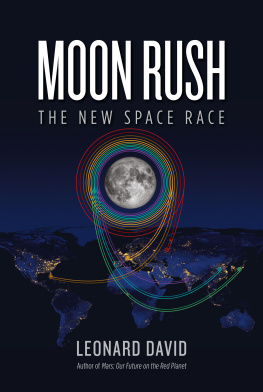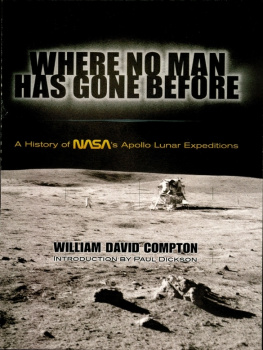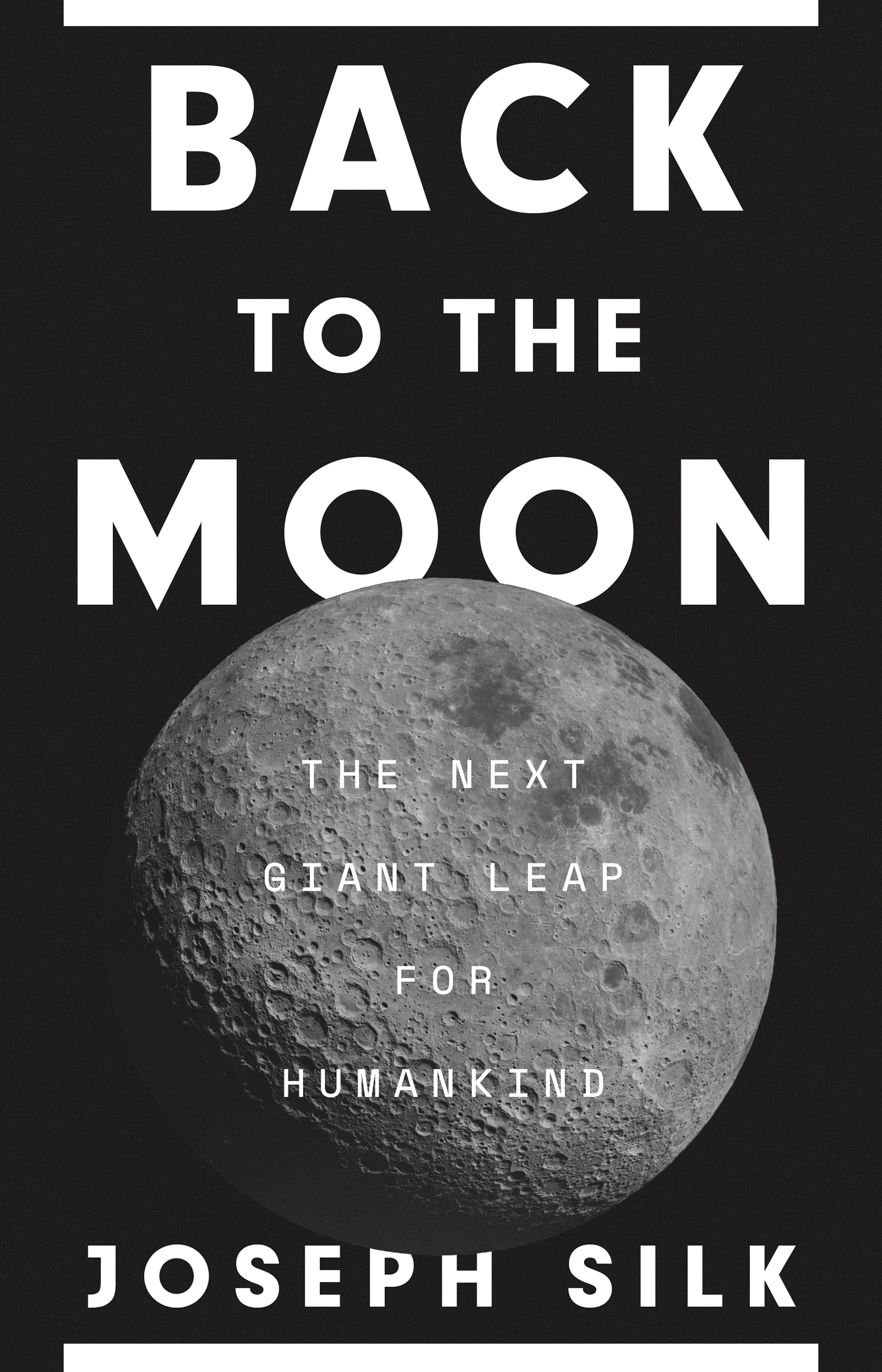Contents
Guide
Pagebreaks of the print version
BACK TO THE MOON
BACK
TO THE
MOON
THE NEXT GIANT LEAP FOR HUMANKIND
JOSEPH SILK
PRINCETON UNIVERSITY PRESS
PRINCETON AND OXFORD
Copyright 2022 by Princeton University Press
Princeton University Press is committed to the protection of copyright and the intellectual property our authors entrust to us. Copyright promotes the progress and integrity of knowledge. Thank you for supporting free speech and the global exchange of ideas by purchasing an authorized edition of this book. If you wish to reproduce or distribute any part of it in any form, please obtain permission.
Requests for permission to reproduce material from this work should be sent to
Published by Princeton University Press
41 William Street, Princeton, New Jersey 08540
99 Banbury Road, Oxford OX2 6JX
press.princeton.edu
All Rights Reserved
Library of Congress Cataloging-in-Publication Data
Names: Silk, Joseph, 1942 author.
Title: Back to the moon : the next giant leap for humankind / Joseph Silk.
Description: Princeton, New Jersey : Princeton University Press, [2022] | Includes bibliographical references and index.
Identifiers: LCCN 2022002240 (print) | LCCN 2022002241 (ebook) | ISBN 9780691215235 (hardback) | ISBN 9780691242880 (ebook)
Subjects: LCSH: Lunar bases. | Space colonies. | Space industrialization. | MoonExploration.
Classification: LCC QB582.5 .S55 2022 (print) | LCC QB582.5 (ebook) | DDC 629.45/4dc23/eng20220420
LC record available at https: / /lccn.loc.gov/2022002240
LC ebook record available at https: / /lccn.loc.gov/2022002241
Version 1.0
British Library Cataloging-in-Publication Data is available
Editorial: Ingrid Gnerlich and Whitney Rauenhorst
Production Editorial: Kathleen Cioffi
Text and Jacket Design: Karl Spurzem
Production: Danielle Amatucci
Publicity: Sara Henning-Stout and Kate Farquhar-Thomson
Jacket image: The far side of the Moon photographed by Apollo 16, April 1972. Courtesy of NASA.
CONTENTS
- vii
PREFACE
WHERE DID WE COME FROM? Are we alone in this vast Universe? I argue that these are questions that only a lunar platform can realistically confront. We need a new science vision for humanity to complement lunar space exploration and exploitation. Such an endeavor can infinitely enrich the anticipated commercially linked activities of the next decades. The outcome can be to attain unique and compelling science goals, if we provide the inspiration. That is the goal of this book. Science-led projects will span our ultimate visions in the worlds most ancient sciences, astronomy and cosmology, pioneered in Mesopotamia some 5,000 years ago.
The last frontier in astronomy is exploring the dark ages, before the faint glimmerings of the first light in the Universe. Pristine clouds of hydrogen are building blocks of the future as well as direct witnesses of the past. Very low-frequency radio astronomy is uniquely able to hear their testimony about the beginning of creation, but only if we are brave enough to install low-frequency radio telescopes on the far side of the Moon, the most radio-quiet environment in the inner solar system. Low-frequency radio antennae strung out over large swathes of the lunar surface would tune into the darkest period of our cosmic history, allowing us to unlock the hidden secrets of the beginning of the Universe.
Our complementary goal is the astronomers holy grail: the search for signs of extraterrestrial life by studying planets around nearby stars. Only a megatelescope on the Moon could reach out to the thousands or even millions of potentially habitable exoplanets we will need to observe in order to have a reasonable chance of detecting the faintest glimmerings of the most primitive forms of extraterrestrial life, and eventually of seeking traces of highly advanced life forms that exceed our own limited capacities. The potential benefits of using lunar resources, of facilitating the construction of scientific infrastructure on the Moon, cannot be underestimated.
Our space telescopes were greatly facilitated by the NASA crewed space flight program, including development of the space shuttle and construction of the International Space Station. Similar logic is likely to apply to lunar exploitation. Lunar infrastructure could subsidize otherwise fiscally unachievable projects such as searching for signatures of remote life using megatelescopes, which are factors of ten larger than any optical telescope feasible on Earth.
The Moon formed as a consequence of a giant impact some four billion years ago with a body that had the mass of Mars. By prospecting on the Moon, we can generate an even deeper understanding of its origin. We will drill deep into the regolith. We will date lunar rocks and measure their composition over a wide variety of lunar terrain. Only in this way can we piece together and reconstruct lunar history. Understanding the origin of our closest neighbor will elucidate the mystery of how the Earth itself formed. Indeed, there are mysteries to be unveiled that will provide clues about the origin of the solar system itself.
Lunar exploration will be humanitys first serious step into space, and establishing habitable facilities on our nearest neighbor in space will be the gateway to a new age of exploration. There is no technological barrier to establishing an outpost of life on the Moon; with a mix of human and robotic exploration, we can realize that goal. From that unique vantage point, we can move on to explore the possibility of finding life elsewhere in the Universe and probing its beginning. Here is a vision for the next half-century, an exciting time when the major international space agencies are jostling for a habitable space on the Moon. Lets do science!
BACK TO THE MOON
PROLOGUE
The Moon Beckons
I believe that this Nation should commit itself to achieving the goal, before this decade is out, of landing a man on the moon and returning him safely to earth.
JOHN F. KENNEDY, 1961
Returning to the moon is an important step for our space program. Establishing an extended human presence on the moon could vastly reduce the costs of further space exploration, making possible ever more ambitious missions. Lifting heavy spacecraft and fuel out of the Earths gravity is expensive. Spacecraft assembled and provisioned on the moon could escape its far lower gravity using far less energy, and thus, far less cost. Also, the moon is home to abundant resources. Its soil contains raw materials that might be harvested and processed into rocket fuel or breathable air. We can use our time on the moon to develop and test new approaches and technologies and systems that will allow us to function in other, more challenging environments. The moon is a logical step toward further progress and achievement.
GEORGE W. BUSH, 2004
THE SILVERY WHITE GLOBE in the sky has always fascinated humanity. The Moon is a driver of the ocean tides, but less materialistically and more romantically, the Moon is also a source of inspiration, wonder, even madness. The full Moon glows in reflected sunshine, and the new Moon glints in reflected earthshine. The Moon has no atmosphere. It is lifeless. The lunar surface has craters, mountains, highlands, lowlands, and relics of impacts and volcanic flows. The meteorites and asteroids that have bombarded the Moon over billions of years have reshaped its surface, leaving its features highly weathered by its history of impacts and volcanism. Human traces are few and far between, restricted to a handful of landing sites. But this is destined to change over the next decades as human lunar exploration and exploitation projects get underway.


